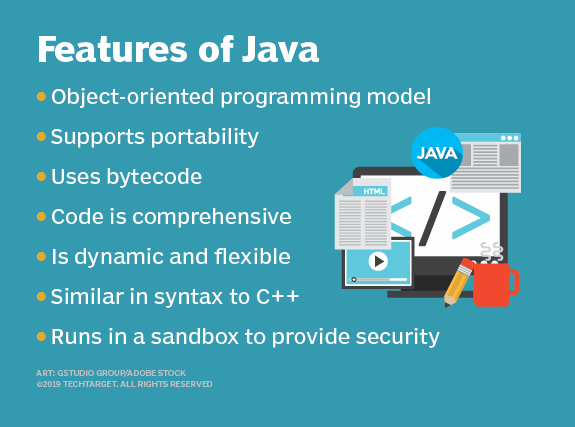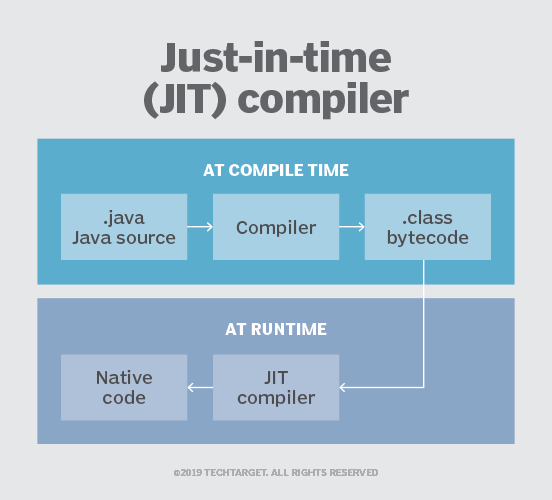The 7 benefits of Java
The 7 Java benefits
When Sun Microsystems released the Java Language Environment white paper in 1995, they listed the following 7 benefits Java would bring to the world of software development:
- Java is simple and familiar.
- Java is object-oriented.
- Java is architecture-neutral.
- Java is robust and secure.
- Java is multithreaded.
- Java is capable of high performance.
- Java is statically typed and compiled.
Note: The original 1995 white paper on Java’s 7 benefits actually said that “Java is interpreted and dynamic,” but this was no longer true in 1997. Instead, we can say that it is “statically typed and compiled.”
The question is, are the 7 benefits of Java still as applicable today as they were when they were first put to paper almost 30 years ago?
Java is simple
Java was simple compared to its competitors at the time, which includes languages like:
- COBOL
- C and C++
- VisualBasic
- PHP
- Pascal
The software development landscape has changed significantly from the mid-90s, with Python, JavaScript, Rust and Go established in the software development field.
Fortunately, Java has evolved to compete on equal footing with these languages, and new features make Java just as simple and easy to learn as Python and Rust.
- JShell makes Java a simpler language for scripting than Python.
- Lambdas and streams make functional programming in Java easier than Scala or Clojure.
- Support for standalone applications makes Java easier for building desktop apps than C or C++.
Furthermore, online compilers such as Replit and Onecompiler make it incredibly easy to get started and learn Java.
Java remains a simple programming language which is easy to learn and easy to use at an advanced level. Simplicity remains an important benefit of Java.
Java is object-oriented
Object-oriented analysis and design (OOA&D) remains the best way to tackle large-scale enterprise problems. Java’s commitment to its object-oriented roots has never wavered.
Even today, organizations that perform domain-driven design and need a powerful, object-oriented programming language choose Java. No other language does OOA&D better than Java, and no other language makes it easier.
However, in recent years there has been a trend away from OOA&D toward functional programming. However, Java has been on top of that trend as well.
Java’s introduction of lambda expressions, streams and default interfaces allows Java to support both the functional programming model and the object-oriented model at the same time.
So not only is Java still relevant in terms of OOA&D, but it has evolved to support functional programming, which is just as important today as support for object-oriented programming.

The 7 benefits of Java include security, robustness and portability.
Java is architecture neutral
Write once, run anywhere was the rallying cry for Java developers in the early days of the internet.
Java remains cross-platform and architecture-neutral, but this feature is less relevant today than it was in the past.
Any application that can run inside of a Docker container, which includes anything written in PHP, Ruby, Python, Go or Rust, is now cross-platform because a Docker container can run anywhere.
Java’s cross-platform nature was a major Java benefit in 1995, but the significance of this today is not as profound.
Java is robust and secure
Java applications, whether they run on a client machine or run on a server, are highly secure and robust. This security and robustness in Java is provided through:
- Compile-time checking of source code.
- Dynamic runtime checking of bytecode.
- Removal of the use of pointers and pointer arithmetic.
- Namespace isolation for externally loaded code.
- Execution takes place within a restricted sandbox.
This benefit of Java continues to give network administrators and home users confidence that the programs they run are less likely to install malware or be subject to a malicious attack.
Java’s security and robustness is as important today as it ever has been.
Java is multithreaded
Incredibly powerful, multi-core, multi-threaded computers were not the norm in the early 90s when Java was first conceived.
However, from day one, Java has had a built-in set of libraries that made multi-threading and parallelism incredibly easy to implement.
In addition to Java’s multi-threading capabilities, Java has an extremely powerful concurrency API that allows developers to create programs that take advantage of multicore computers in a multitude of ways.
Contrast this with Python, a language where the limitations of the garbage collector prevent a multithreaded application to move beyond a single processor.
The fact that Java was multithreaded when it was released in 1996 was forward-thinking and bold.
Today, Java’s multithreaded nature and concurrency APIs set it apart from languages such as Python, JavaScript and C#.

The just-in-time compiler makes performance one of the Java benefits sys admins and DevOps professionals love.
Java is capable of high performance
Java applications run on a JVM, a layer of abstraction that sits between the CPU and your Java code. As with any abstraction layer, there is a performance hit associated with the JVM.
However, given the great deal of work required to optimize garbage collection, just-in-time compilation and memory management, Java applications approach near-native performance.
Java programs can’t run as fast as a close-to-the-metal binary file generated by Rust or C++, but it comes very close. That minor performance hit is a minor price to pay when you take into account all 7 benefits of Java.
Java is interpreted and dynamic
The original Java whitepaper promised that Java would be interpreted and dynamic to eliminate the compile-link-load-test-crash-debug cycle that C and C++ developers suffered through at the time.
The statement was true in 1994. As mentioned above, it was no longer true in 1997.
Java is now statically typed and compiled
Java designers recognized early in the language’s infancy the negative long-term effects on performance, multi-threading capabilities and source-code maintenance if Java remained an interpreted language like Python or JavaScript. So, they pivoted.
You could probably add that foresight as an extra point onto the list of the 7 benefits of Java. The architects of the language are quick to adapt if they see opportunities to improve the language when the opportunity arises.
 Cameron McKenzie is an AWS Certified AI Practitioner, Machine Learning Engineer, Solutions Architect and author of many popular books in the software development and Cloud Computing space. His growing YouTube channel training devs in Java, Spring, AI and ML has well over 30,000 subscribers.
Cameron McKenzie is an AWS Certified AI Practitioner, Machine Learning Engineer, Solutions Architect and author of many popular books in the software development and Cloud Computing space. His growing YouTube channel training devs in Java, Spring, AI and ML has well over 30,000 subscribers.



